Sela Carsen's Blog, page 7
February 27, 2012
Mythology Monday: Slavic Mythology
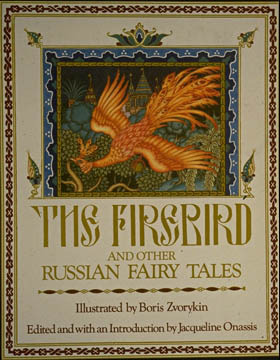 Sure enough, there be gods in Eastern Europe. From Macedonia (just above Greece) all the way to Latvia (just south of Finland) and including more than a dozen countries both large and small with ever changing regimes, borders and dialects.
Sure enough, there be gods in Eastern Europe. From Macedonia (just above Greece) all the way to Latvia (just south of Finland) and including more than a dozen countries both large and small with ever changing regimes, borders and dialects.
In fact, there is a movement in the Baltic (Northern Slavic) countries to return to an ethnic polytheistic pagan religion called Romuva, which worships the old gods and is important in preserving Baltic folk traditions.
If you remember, we talked about Basque mythology recently and one of the problems in researching is that Christianity had been around for so long that many of the traditions were forgotten. You know, what with the Inquisition burning thousands of Basque pagans and all. The issues surrounding research into Slavic mythology have some of the same issues. Not necessarily due to the Spanish Inquisition – totally unexpected – but because of centuries of Christian influence in the area. In addition, the Slavs had no written language prior to their Christianization, and many stories were no doubt lost in the mists of time.
One thing that struck me in my study was the recurrence of a World Tree, which we've seen in Norse mythology and in Central American mythology. As in other cultures, the tree – an oak this time – was symbolic of the different levels of existence. The crown represented the heavenly deities, the trunk was the realm of mortals and the roots of the tree stretched into the underworld.
As opposed to many of the cultures we've studied, the underworld of Slavic mythology was actually very nice – not a world of fire and judgment, but of eternal spring. The tree was also organized along the four cardinal directions of the wind (horizontal axes) and the various levels of the tree (vertical axes). To correspond, there was the three-headed god, Triglav, the god of prophecy and soothsaying, and Svantevit, the four-headed god of both war and harvest. An unusual combination.
As to major gods, there were a few. Perun was the top guy. The god of the thunder, lightning and fire. He was also a dry god. This is important in a minute. He drove a chariot across the sky (Apollo, much?), hurled a hammer (Thor, much?) at evil spirits and lived at the top of the World Tree. His opposite number is Veles, the god of the underworld. Naturally, they were enemies. Veles was a god of peasants, cattle and wealth. He was a wet god. Represented as a dragon or serpent, he would steal Perun's cattle. Dry periods were the result of Veles thievery and trickery of Perun. When Perun went after him to get his cattle back, a great battle would ensue – big storms with lots of thunder and lightning. The battles would result in the defeat/death of Veles – when his body was split open by Perun's sword, the great rains would fall and order could be restored.
There are a number of smaller deities who controlled or symbolized other aspects of life for the Slavs. Czernobog represented the darkness of winter and was accordingly a bleak and forbidding god. His position was overtaken in the spring by the other half of himself, Bielobog, a god of sun, light, and life. The Czernobog/Bielobog deity, however, is unsubstantiated by modern research because of the dearth of proof. Indeed, while Czernobog is fairly certain to have existed within the pantheon, the only theory of Bielobog's existence is merely the conjecture of a 12th century priest who assumed that the evil of Czernobog *must* have some balancing force – not necessarily true.
The Zorya were a trilogy of sister goddesses who symbolized the passage of the sun and moon. They are the Morning, the Evening, and the Midnight Star, guarding the gates of heaven for the passage of the sun. They also stand guard over the doomsday hound, who, if he ever breaks his chain, will eat the constellation of Ursa Minor. If he ever does, the universe will end.
The Slavs also have a rich and varied folklore consisting of goblins, fairies, witches, dragons and firebirds. For more information on that, see this University of Alberta link and this one from the University of Alabama. Those are also good sources for the mythology we've discussed here. See also the Slavic Pantheon. Wikipedia, as always, is a good jumping off point for further research, but my other two favorite pantheon sources, Godchecker and Encyclopedia Mythica, are sadly lacking in this area.
This article is reprinted from my original posting at Beyond the Veil on Aug 31, 2007.
February 25, 2012
Plagiarism rears its ugly head again
Well. Butter my butt and call me a biscuit. I thought I was a slow learner, but I figured that by now folks would know better than to just outright lift books written by other people, change the names, and call it theirs.
I was wrong.
Aside from the personal betrayal I feel that yet another person has stolen right and left from some prominent Harlequin authors, there's a huge element of intellectual WTF-ery that's going on in my head.
It keeps going back to two things. First, who steals writing? Who thinks that's okay? Who thinks that just slapping your name on something gives you the right to count yourself a writer? The writing community has gone over and over this – Do Not Steal Words!! It's not that hard a lesson to learn. There's a thick, sticky film of moral turpitude all over this woman's actions. A general sense of "ewwww" that's usually reserved for people who have unnatural relations with farm animals.
Second, her original excuse when caught out: "I forgot I didn't write it."
There are no words to explain to someone who isn't a writer that this Simply Isn't Possible. Sure, you may have forgotten you wrote a piece you stashed in a file on your computer. But when you read it, it comes back to you. You remember not just the words, but the voice, the decisions you made over every turn of phrase, you remember where you were sitting and what phase of life you were in. But whole stories do not just pop up out of nowhere, and leave you with no memory of having sat down and put in the hours.
It's BS anyway. She later wrote an apology and posted it to Dear Author, basically stating that yes, she's a thief and she's sorry.
I'm of two minds about that (I seem to be very multiply minded today). I'm glad she apologized. We don't get that from most of the people who plagiarize. But after most of the day with the "I forgot I wrote it" thing flinging around the internet, it falls short of solving anything. Apologies don't usually solve situations to begin with, but coming as it did after multiple offenses were uncovered, it feels a lot more like she's sorry she got caught.
Is it a question of wanting the cachet? Because yeah, being a romance author is so often well-regarded in society.
And the time spent running a blog and participating in writer's groups and just generally being out there as an author – why do that if you don't write?
I never will understand what drives people to do this, and I suppose that's a good thing for most of us. That our brains are simply not wired to steal things that don't belong to us.
It wasn't what I wanted to deal with yesterday, but I'm glad it's out – like lancing an infection. An ugly business, but once it's done, the healing can begin. I don't know if this story will serve as a cautionary tale to prevent anyone who's already bent like this from plagiarizing, but it's at least some comfort that this individual has been exposed.
February 20, 2012
Mythology Monday: The Gorgons
 Snake haired, fanged furies of Greek myth. Popular mythology concentrates on Medusa, but there's much more to these ladies than we learn from monster movies.
Snake haired, fanged furies of Greek myth. Popular mythology concentrates on Medusa, but there's much more to these ladies than we learn from monster movies.
In fact, there's some doubt as to whether there are one or three of them. And if there are three, why are two immortal (Sthenno and Euryale) and poor Medusa the only mortal?
The tales of one Gorgo come from the oldest myths, told by the poet Homer. The head of the Gorgo was taken to form the aegis of the shield of Athena. Even Euripides believed in only one monster. It's Hesiod who transformed the tale to include three sisters, the daughters of Phorkys and Keta. He portrayed them with snakes and fangs, but Aeschylus gave them wings.
The early Classical poets agreed on one thing. The Gorgons were horrible to observe. Some of the images were incredibly creepy. It wasn't until the later Classical period that poets and artists humanized Medusa from a monster to a beautiful, but cursed woman.
So back to my original question. How do you end up with two out of three immortal daughters? Wicked bad luck, is what I'm thinking.
 Mortal Medusa was a beauty, the stories say. Some believe that she compared her beauty to that of Athena. We've already seen how that works out. *cough*Arachne*cough* But others feel that her fate can be laid at the feet of another god. One who wouldn't take no for an answer. Medusa was a servant of Athena, but the great sea god Poseidon was enchanted by her beauty, so he seduced her in Athena's temple. The virgin goddess turned her eyes away in horror, then punished Medusa by turning her lovely hair to snakes.
Mortal Medusa was a beauty, the stories say. Some believe that she compared her beauty to that of Athena. We've already seen how that works out. *cough*Arachne*cough* But others feel that her fate can be laid at the feet of another god. One who wouldn't take no for an answer. Medusa was a servant of Athena, but the great sea god Poseidon was enchanted by her beauty, so he seduced her in Athena's temple. The virgin goddess turned her eyes away in horror, then punished Medusa by turning her lovely hair to snakes.
WTH?!? Girl has sex, so you turn her into a monster? Wow. That's some seriously messed up logic (as well as a seriously uptight and repressed goddess), but Medusa's tragedy doesn't end there.
Now she's even more super special than just being the gorgeous daughter of gods. No. Now she can turn men to stone with a glance because they're so filled with dread at her hideous appearance.
See, now she's a weapon, and we know how gods and warriors and heroes get all excited about new weapons. King Polydektes had challenged Perseus to bring him the head of the Gorgon, so he set off on his heroic quest, aided by Hermes, Athena (traitor!) and Hades.
The Graiaie guarded the cave where the Gorgons slept, but they had only one eye between them. Perseus stole the eye and bargained it for entrance to the cave. He used the reflection of his polished shield to find Medusa and cut off her head with one stroke.
However, in her death, Medusa gave birth to new life. The winged horse Pegasus and the giant Khrysaor sprang from her death-wound.
Perseus then brought her head back to his enemies, flying over Libya to get home. As he flew, drops of the Gorgon's blood fell to the sand, creating fatally poisonous vipers in the desert there.
Medusa's head was used to vanquish armies as well as the odious Polydektes, then turned over to Athena as the centerpiece for her aegis.
The End. *sniffle* She picked the wrong guy and died for it. No HEA for our girl Medusa.
But…could there be? I'll let you know when I finish writing my current story, inspired by Medusa's tale.
This article is reprinted from my original posting at Beyond the Veil on May 15, 2009.
February 17, 2012
Friday Foodie: Kedgeree…kind of
A few weeks ago as I was starting our new "flexatarian" (semi-vegetarian) kick, I tried out an Egyptian recipe called Kusherie. Basically, it was lentils and rice with caramelized onions and a tomato sauce on top. The kids weren't exactly falling all over themselves, but everyone pronounced it "not bad, but it needs some more flavor."
Recently, I was flipping through Roz Denney's Ultimate Vegetarian Cookbook and came across a recipe for Kitcheri, which she said was the original Indian dish that inspired Kedgeree.
Lentils and rice. Kusherie/Kitcheri/Kedgeree. Are we seeing the pattern here?
So I pulled my laptop into the kitchen and opened the book to the right page and started tweaking.
2-3 Tbs olive oil
1 onion, chopped
2-3 cloves of garlic, minced
1 cup lentils, rinsed and drained
2 tsp ground coriander
2 tsp cumin seeds
2 whole cloves
3 cardamom pods
2 bay leaves
1 stick cinnamon
1 qt stock (vegetarian or chicken. I went with veg and found it a little thick.)
2 Tbs tomato paste
salt and pepper
Chopped coriander/cilantro (same thing) or parsley (optional)
Heat the oil in a good sized saucepan (this is a one-pot meal!), and saute the onion and garlic until the onion is starting to go golden. Add the lentils and stir until they're well coated in the oil and starting to brown a bit. Stir in the spices and cook for about a minute. Add the rice and coat in the oil and spices.
Add the stock and tomato paste and season to taste. Bring to a boil, then cover and simmer for 20-25 minutes until the stock is absorbed and the lentils and rice are soft. Fish out the bay leaves and cinnamon stick. Stir in the cilantro or parsley if you like, and serve.
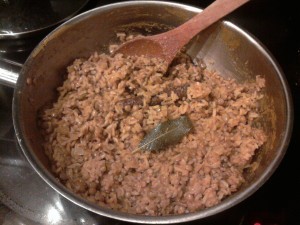 So it's not the most gorgeous thing you'll ever put on a plate. It tastes good! Serve it with some naan or other flatbread and a salad or green veg and you're good to go for dinner.
So it's not the most gorgeous thing you'll ever put on a plate. It tastes good! Serve it with some naan or other flatbread and a salad or green veg and you're good to go for dinner.
*Note: The spices. You'll want to hit a large grocery store or international store for the odd stuff like cardamom pods. I have them because I'm a freak and my spice cabinet is out-of-control weird. The rest of it is available in most grocery stores. If it comes down to it, you could use a bit of ground cardamom or skip it entirely.
February 13, 2012
Mythology Monday: The Labyrinth
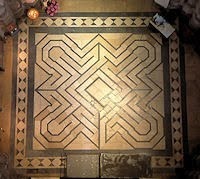 I think most of us know the story of the Minotaur.
I think most of us know the story of the Minotaur.
The Minotaur was the offspring of Pasiphae (the wife of King Minos of Crete) and the Cretan Bull. Aphrodite gave Minos a perfect bull so that he could sacrifice it to her, but he decided to keep it instead. To punish him, the goddess made Pasiphae fall in love with the bull. Insert bestiality here and the Minotaur was born, the offspring of a human and a monster.
Minos had the monstrous child placed at the center of a labyrinth constructed by Daedelus and life went on until Minos's[1] son was killed by the Athenians in battle. Minos won the war and to punish the Athenians, he commanded that they send their seven best young men and seven loveliest young women to be sacrificed to the beast. They were released in the labyrinth and consumed by the Minotaur.
After a few of these sacrifices, the hero Theseus decided that enough was enough. He went to Crete where Minos's daughter, Ariadne, fell in love with him. She gave him the key to the labyrinth and a ball of string to help him find his way back. Theseus slew the Minotaur, led the Athenian youths out of the maze, and escaped Crete with them and Ariadne. (At this point, Theseus ceases to be heroic because he abandons Ariadne on the isle of Naxos. Jerk. She curses him to forget which color sails to raise on his way home and when his dad sees the black sails, he assumes Theseus is dead and throws himself off a cliff. Good start, bad ending.)
Anyway…back to the labyrinth. While the maze of the Minotaur is a myth, there is substantial archaeological evidence to suggest that there truly was a labyrinth at the Minoan palace of Knossos. The palace actually WAS the labyrinth![2] The building was arranged so that it was virtually impossible for someone unfamiliar with the layout to navigate it. That doesn't really explain the whole bull-man thing, but it lends the ring of truth to the idea of the maze.
There are mazes from Ancient Egypt, as well. The labyrinth at Hawara[3] that was, according to Herodotus, "…it is hard to believe that they are the work of men; the baffling and intricate passages from room to room and from court to court were an endless wonder to me…." [4]
This labyrinth was originally constructed as a mortuary hall and built over several generations. The oldest name recorded at the temple was that of Amenemhat III, who also built the "Black Pyramid." The burial temples of the pharaohs were never forthright and even the contemporary archaeologist "Dr Zahi Hawass has said that when he first entered this pyramid he had a rope tied around his ankle to ensure he didn't get lost inside."[5]
While the labyrinth at Knossos is certainly one of the most famous, it's not the only ancient labyrinth left for us by our ancestors. From the Bronze Age, there are petroglyphs of what's now known as the Classical or 7-circuit maze in India, Pakistan, Afghanistan and Sri Lanka.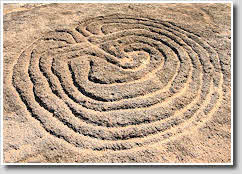
There are labyrinths from the Bronze Ages – even some the Neolithic Age – that can be found throughout Europe. The vast majority of them reflect the same Classical form, which suggests that the symbolism of the labyrinth was in some way universal. However, it's impossible to know for certain. Labyrinths found in the Valle Camonica in Italy are usually found with scenes of battle and soldiers, where similar patterns in Galicia are surrounded by wild animals – a symbol of the hunt, perhaps.
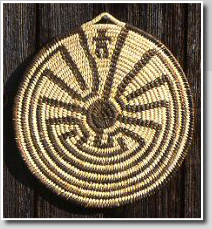 Labyrinths aren't specific to the continents across the Atlantic, however. The Tohono O'odham, a Native American tribe in Arizona have a symbol they call "The Man in the Maze."[6] Petroglyphs of the maze, which features a man standing in the opening of the labyrinth, have been found at the Casa Grande Ruins.
Labyrinths aren't specific to the continents across the Atlantic, however. The Tohono O'odham, a Native American tribe in Arizona have a symbol they call "The Man in the Maze."[6] Petroglyphs of the maze, which features a man standing in the opening of the labyrinth, have been found at the Casa Grande Ruins.
But the real mystery is in the meaning of the labyrinth. As I mentioned, the Stone Age labyrinths seem to symbolize something…but what? Their meaning is unclear.
The Cretan labyrinth might have been merely the result of creative architecture, but was mythologized into a scenario of terror and death.
What, then, do those early symbols have in common with the labyrinths and mazes of the Middle Ages? And how do they connect to the modern-day resurgence of labyrinths as paths to inner peace?
The connection is entirely uncertain. People of many faiths today walk labyrinthine patterns to help clear their minds. It's said that following the path to the center of a labyrinth will help untangle problems as you meditate.
Whatever the symbolism, current or past, they provide an artistic framework for the famous "What if?" How can a labyrinth inspire you?
An excellent resource on labyrinths can be found at Labyrinthos.net.
[1] Minos's is correct according to Strunk & White's Elements of Style. The Chicago Manual of Style can go jump in a lake.
[2] http://www.explorecrete.com/Knossos/k...
[3] http://www.labyrinthofegypt.com/art-s...
[4] ^ Herodotus, The Histories, translated by Aubrey de Sélincourt, Book II, pp. 160–61.
[5] http://www.talkingpyramids.com/dahshu...
[6] http://www.reznetnews.org/article/sev...
This article is reprinted from my original posting at Beyond the Veil on Oct 1, 2010.
February 7, 2012
Monday Mythology on Tuesday
Sorry! It's been a little hectic here.
Mom had her 8th knee surgery on Friday and I brought her home on Monday after a whole bunch of mangled communication with the hospital.
So yesterday's myth? That people involved in patient care are capable of communicating clearly.
Anyway, she's home now with her leg in an immobilizer for the next 6 weeks. After that, she starts very gentle physical therapy. I'm just glad she finally got a good night's sleep and she's eating again. And would you believe that she's right now on the phone catching up on 600 messages. Not a typo. 600. Lots of well-wishes, but lots of clients, too. She's just not happy unless she's drowning in work!
February 3, 2012
Friday Foodie: Ham and Cheese Pie (plus, Mom's surgery)
You know all that stuff I said about eating healthy, whole foods? This Ham and Cheese Pie can be done that way. Or you can do it the way I did it this week, when I was tired and frazzled and had a thousand other things to do that afternoon.
Crust:
You can use a regular pie crust, but my favorite part of this recipe is that it uses a thing of those canned crescent rolls. Did you know they now have that dough without the crescent roll perforations? Yup, I guess they figured so many people were using it as pie dough, they'd just save us some time. Rock on, Pillsbury!

Ham:
Sure, you can use your home-smoked leftover ham that you froze at Christmas. Just chop the pieces into a fairly small dice. Or, you can cheat. I picked up a couple of 8 oz packages of pre-diced ham in the grocery store. The only thing I can think of that you should probably do is not dump it straight into the pie, but into a colander – or a sieve, actually, since the pieces are pretty small – and rinse it to get rid of the extremely salty ham juice. I didn't do this step and everyone in the family remarked on how salty the end product was.
Cheese:
Umm, just use 8 oz grated cheese. I picked sharp cheddar.
The process:
Preheat your oven to 325F. Line a pie pan with your nifty dough. In another bowl, mix together
2 eggs, lightly beaten
2 Tbs finely chopped onion. I was so lazy I even skipped this step.
1 1/2 cup diced ham. I just used both packages, so ours was extra hammy. Don't forget to rinse.
8 oz grated cheese. Use a couple of different kinds, if you like. Clean out the cheese drawer.
Here's where I deviated from the recipe. I did the eggs first, then hit my spice cabinet. I added onion powder (to make up for the onion I was too lazy to chop), garlic powder, dried mustard, a dash of cumin and a bit of chili powder. Mix that into the egg, then add the ham and cheese.
Pop the mixture into the pie pan, bake for one hour.
That's it. Took 5 minutes to prep, then I had time to do all my other stuff while it baked.
And once again, I didn't think to get a picture. Hey, I said I was busy! But it actually is a pretty pie when it comes out of the oven.
ALSO:
Mom's having what will hopefully be her 8th and final knee surgery today. They'll be putting in the actual knee joint. Prayers for easy surgery and quick recovery, please!
Friday Foodie: Ham and Cheese Pie (plus, Mom’s surgery)
You know all that stuff I said about eating healthy, whole foods? This Ham and Cheese Pie can be done that way. Or you can do it the way I did it this week, when I was tired and frazzled and had a thousand other things to do that afternoon.
Crust:
You can use a regular pie crust, but my favorite part of this recipe is that it uses a thing of those canned crescent rolls. Did you know they now have that dough without the crescent roll perforations? Yup, I guess they figured so many people were using it as pie dough, they’d just save us some time. Rock on, Pillsbury!

Ham:
Sure, you can use your home-smoked leftover ham that you froze at Christmas. Just chop the pieces into a fairly small dice. Or, you can cheat. I picked up a couple of 8 oz packages of pre-diced ham in the grocery store. The only thing I can think of that you should probably do is not dump it straight into the pie, but into a colander – or a sieve, actually, since the pieces are pretty small – and rinse it to get rid of the extremely salty ham juice. I didn’t do this step and everyone in the family remarked on how salty the end product was.
Cheese:
Umm, just use 8 oz grated cheese. I picked sharp cheddar.
The process:
Preheat your oven to 325F. Line a pie pan with your nifty dough. In another bowl, mix together
2 eggs, lightly beaten
2 Tbs finely chopped onion. I was so lazy I even skipped this step.
1 1/2 cup diced ham. I just used both packages, so ours was extra hammy. Don’t forget to rinse.
8 oz grated cheese. Use a couple of different kinds, if you like. Clean out the cheese drawer.
Here’s where I deviated from the recipe. I did the eggs first, then hit my spice cabinet. I added onion powder (to make up for the onion I was too lazy to chop), garlic powder, dried mustard, a dash of cumin and a bit of chili powder. Mix that into the egg, then add the ham and cheese.
Pop the mixture into the pie pan, bake for one hour.
That’s it. Took 5 minutes to prep, then I had time to do all my other stuff while it baked.
And once again, I didn’t think to get a picture. Hey, I said I was busy! But it actually is a pretty pie when it comes out of the oven.
ALSO:
Mom’s having what will hopefully be her 8th and final knee surgery today. They’ll be putting in the actual knee joint. Prayers for easy surgery and quick recovery, please!
February 2, 2012
The cast!
 And here it is. Monkey Boy's blue cast! So far, so good. No pain, which is awesome. He's getting around pretty well, but I didn't realize the bottom of the cast would be slick. On his first full day back to school yesterday, he slipped three times! Today, we're trying a sock to see if that helps. If not, mama's gonna get out the hot glue gun and see if I can't get some sticky on the bottom of that thing. All we need is for him to break a wrist, too!
And here it is. Monkey Boy's blue cast! So far, so good. No pain, which is awesome. He's getting around pretty well, but I didn't realize the bottom of the cast would be slick. On his first full day back to school yesterday, he slipped three times! Today, we're trying a sock to see if that helps. If not, mama's gonna get out the hot glue gun and see if I can't get some sticky on the bottom of that thing. All we need is for him to break a wrist, too!
January 30, 2012
NOT my first Mythology Monday post
I was going to be clever and designate Mondays as Mythology Mondays.
And then Monkey Boy sprained his ankle over the weekend, and it didn't get better with RICE: Rest, Ice, Compression, Elevation. So instead of writing a post about something geeky, we're headed to the pediatrician.
You know what's a myth? That a Stay At Home Mom's life is boring.



